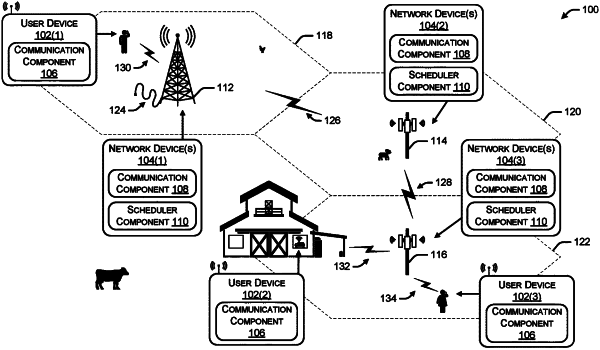| CPC H04W 72/27 (2023.01) [H04M 15/62 (2013.01); H04W 72/51 (2023.01); H04W 76/14 (2018.02)] | 20 Claims |

|
1. A system comprising:
one or more processors;
a memory; and
one or more components stored in the memory and executable by the one or more processors to perform operations comprising:
establishing, at a first child base station, a wireless connection with a donor base station, wherein the donor base station uses a wired connection for backhaul bandwidth and serves as a donor node for the first child base station by providing wireless bandwidth to the first child base station, and wherein the first child base station uses the wireless connection for wireless backhaul bandwidth;
receiving, from the donor base station, an instruction to use a first wireless spectrum for the wireless backhaul bandwidth and a second wireless spectrum for access network;
receiving, from a first device via the access network, first data associated with a first connection, wherein the first data includes a first Subscriber Identity Module (SIM) profile indicating a first device type is a cell phone type;
receiving, from a second device via the access network, second data associated with a second connection, wherein the second data includes a second SIM profile indicating a second device type is a base station type;
determining, based at least in part on the base station type, to increase bandwidth throughput for the second connection to the second device, wherein the first child base station serves as a second donor node for the second device and the second device is a second child base station;
aggregating the first data and the second data to form aggregated upstream data; and
sending, to the donor base station, the aggregated upstream data.
|